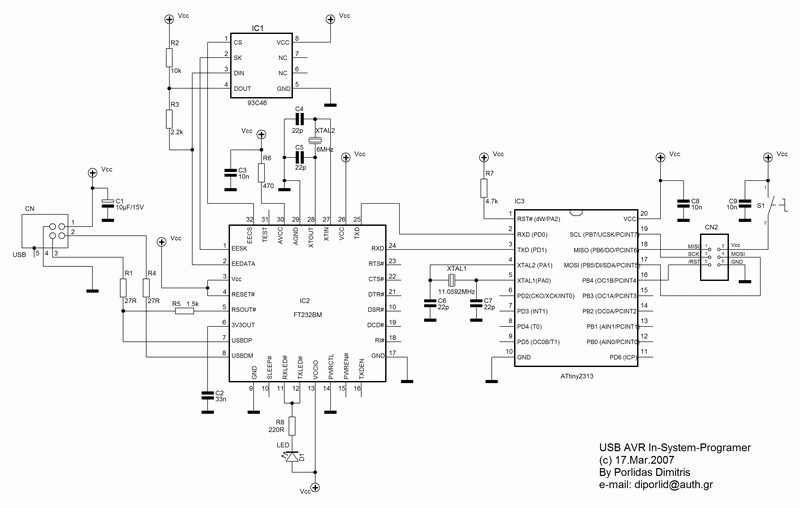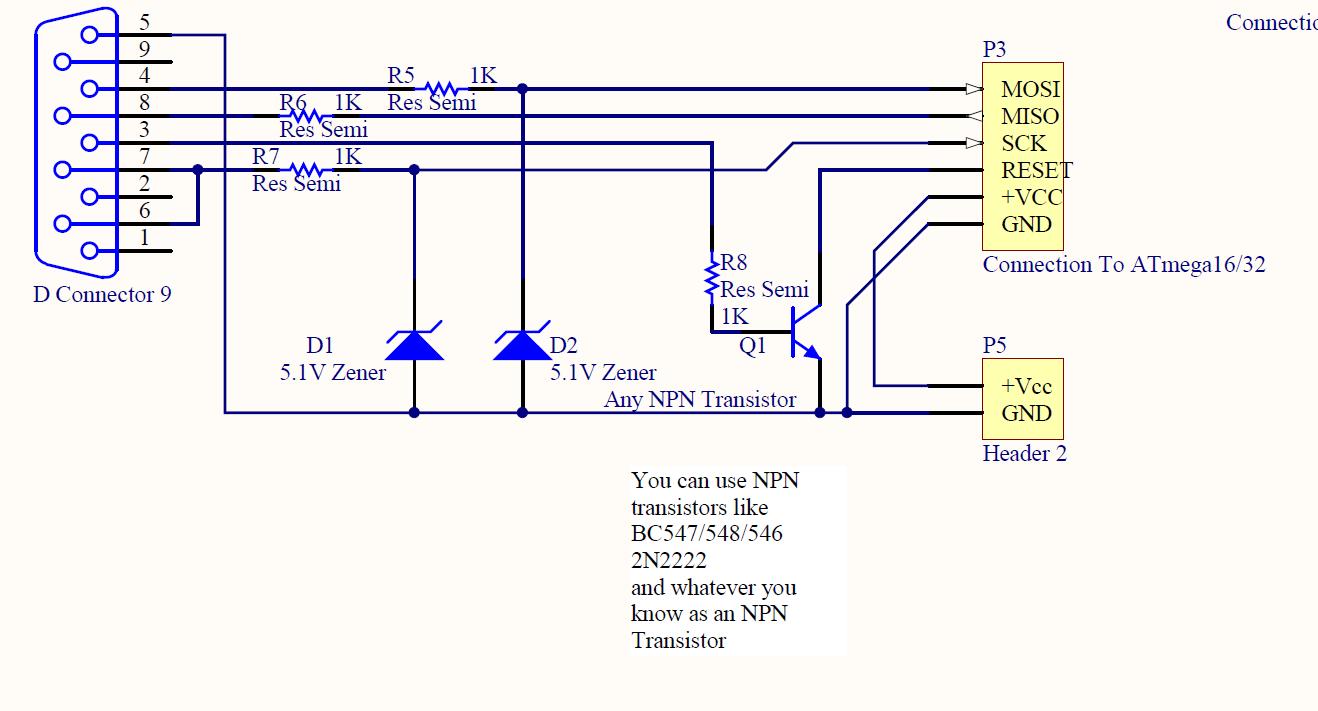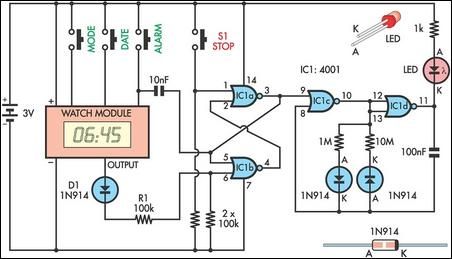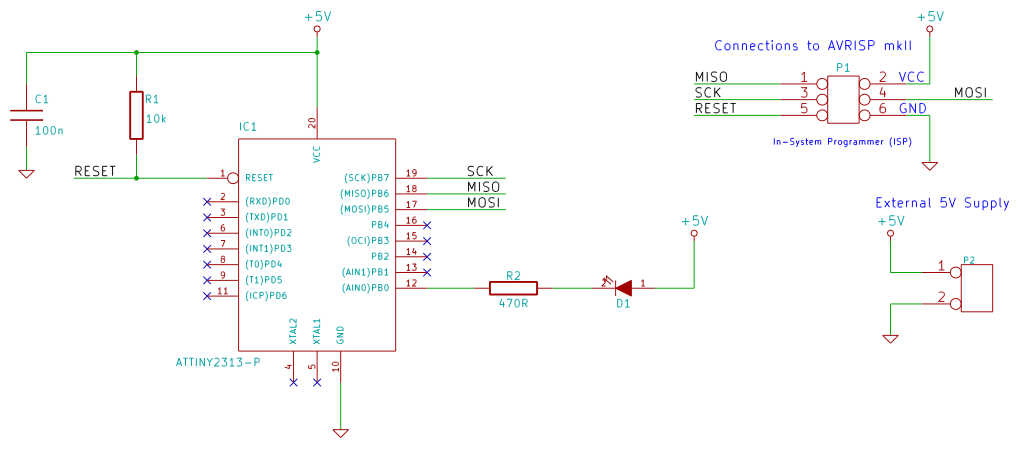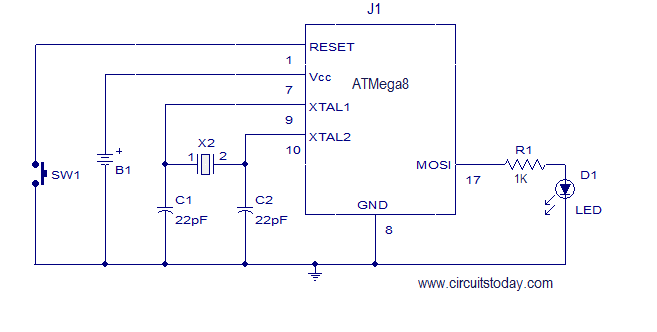
Ranco ETC-211000 uses AVR Atmega16L8
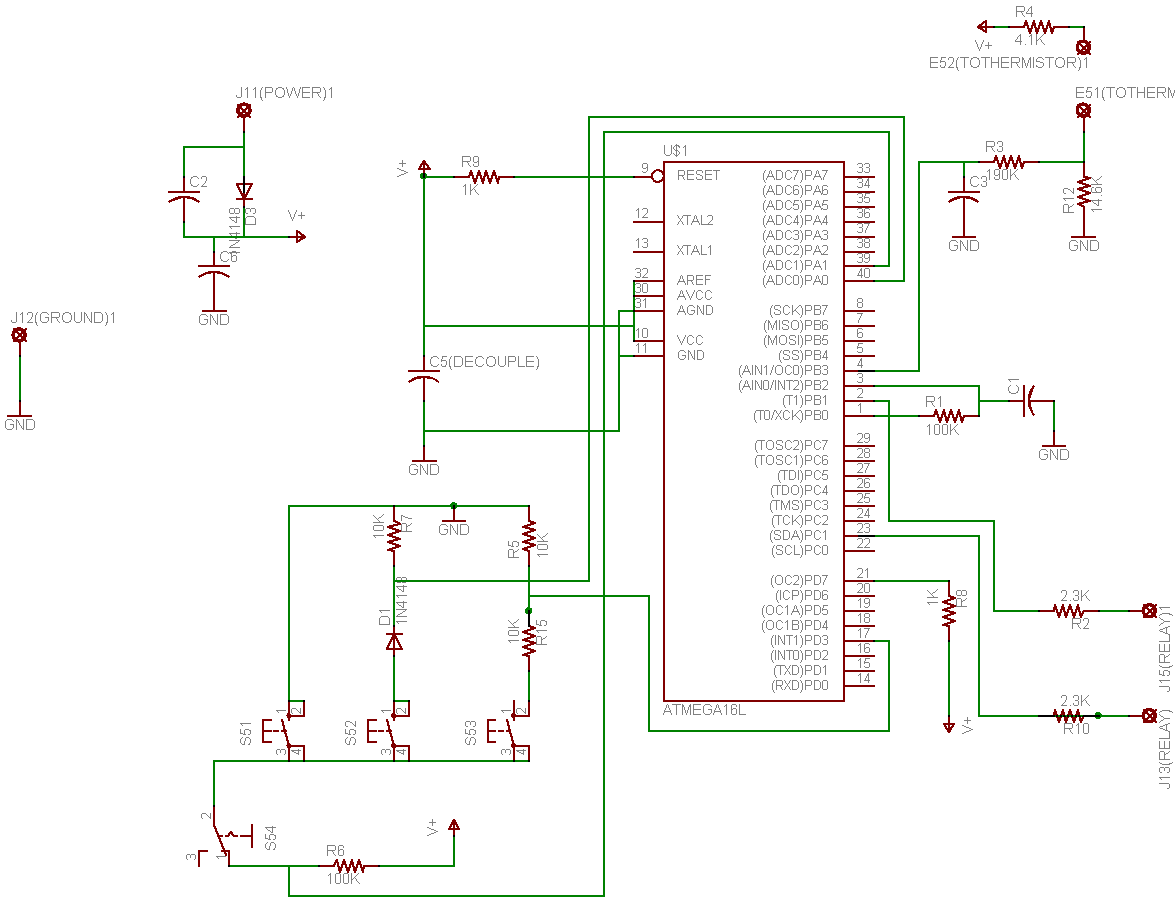
The Ranco ETC-211000 utilizes an Atmega16L8 microcontroller. The chip comes with initial protection, necessitating an erasure before any code development can occur. The design has significant flaws, potentially ranking among the worst encountered during reverse engineering efforts, which span over 20 years of experience.
The Ranco ETC-211000 is a temperature control device that incorporates the Atmega16L8 microcontroller, a part of Atmel's AVR family. This microcontroller features 16 KB of Flash memory, 1 KB of SRAM, and 512 bytes of EEPROM, making it suitable for various embedded applications. The initial protection mechanism on the chip is a security feature designed to prevent unauthorized access to the firmware. To develop custom code or modify the existing firmware, the microcontroller must be erased, which can be accomplished using a suitable programmer that supports the Atmega16L8.
The design of the Ranco ETC-211000 has been criticized for its inefficiencies and potential flaws. Common issues in poorly designed circuits may include inadequate power supply decoupling, suboptimal component placement, and insufficient thermal management. Such shortcomings can lead to unreliable operation, particularly in temperature-sensitive applications where accuracy and stability are paramount.
In terms of schematic considerations, it is essential to ensure that the microcontroller is properly powered, with adequate bypass capacitors placed close to the power pins to filter out noise. The programming interface should be accessible, and the circuit should include a reset mechanism to allow for reliable reprogramming. Any external components, such as temperature sensors, should be chosen based on their specifications to ensure compatibility with the microcontroller's input range and resolution.
Overall, while the Ranco ETC-211000 may serve its intended purpose, the noted design flaws warrant careful consideration for those looking to utilize or modify the device for specific applications. Proper attention to detail in the schematic design and component selection will be critical in overcoming the identified deficiencies.The Ranco ETC-211000 uses an Atmega16L8. The chip is initially protected so if you want to develop some code you will have to erase the chip first. The design is terrible, quit possible the worst i`ve ever seen in my reverse engineering time. Mind you i have 20+ years experience. 🔗 External reference
The Ranco ETC-211000 is a temperature control device that incorporates the Atmega16L8 microcontroller, a part of Atmel's AVR family. This microcontroller features 16 KB of Flash memory, 1 KB of SRAM, and 512 bytes of EEPROM, making it suitable for various embedded applications. The initial protection mechanism on the chip is a security feature designed to prevent unauthorized access to the firmware. To develop custom code or modify the existing firmware, the microcontroller must be erased, which can be accomplished using a suitable programmer that supports the Atmega16L8.
The design of the Ranco ETC-211000 has been criticized for its inefficiencies and potential flaws. Common issues in poorly designed circuits may include inadequate power supply decoupling, suboptimal component placement, and insufficient thermal management. Such shortcomings can lead to unreliable operation, particularly in temperature-sensitive applications where accuracy and stability are paramount.
In terms of schematic considerations, it is essential to ensure that the microcontroller is properly powered, with adequate bypass capacitors placed close to the power pins to filter out noise. The programming interface should be accessible, and the circuit should include a reset mechanism to allow for reliable reprogramming. Any external components, such as temperature sensors, should be chosen based on their specifications to ensure compatibility with the microcontroller's input range and resolution.
Overall, while the Ranco ETC-211000 may serve its intended purpose, the noted design flaws warrant careful consideration for those looking to utilize or modify the device for specific applications. Proper attention to detail in the schematic design and component selection will be critical in overcoming the identified deficiencies.The Ranco ETC-211000 uses an Atmega16L8. The chip is initially protected so if you want to develop some code you will have to erase the chip first. The design is terrible, quit possible the worst i`ve ever seen in my reverse engineering time. Mind you i have 20+ years experience. 🔗 External reference
